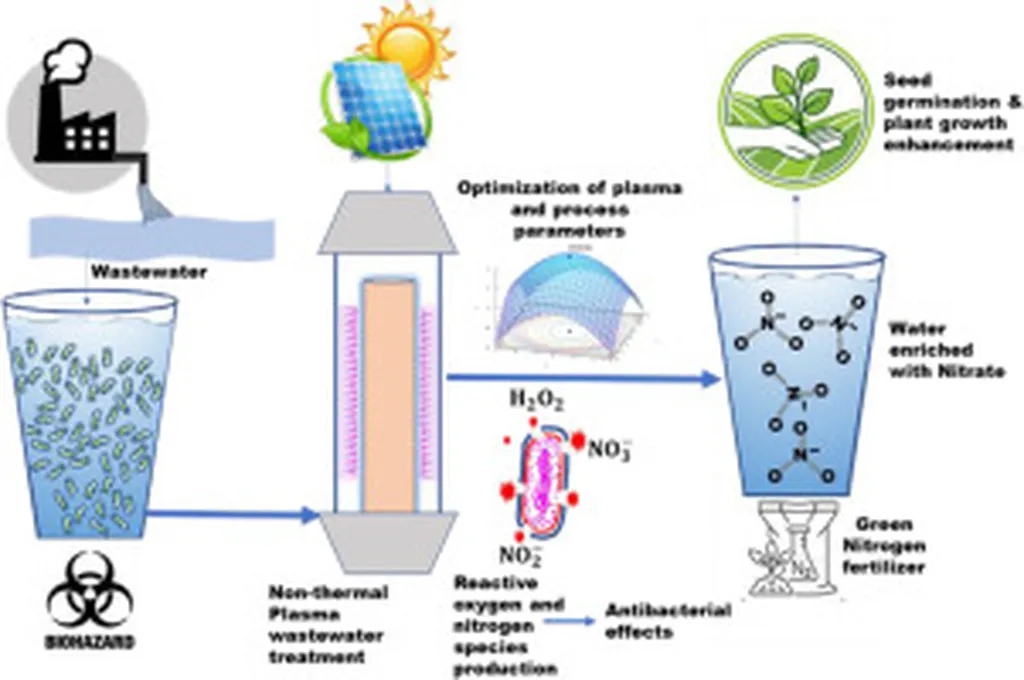In the quest for more efficient and sustainable wastewater treatment solutions, a groundbreaking study led by Güler Türkoğlu Demirkol from Istanbul University-Cerrahpaşa has unveiled a promising approach to enhance the performance of polysulfone (PS) membranes used in membrane bioreactors (MBRs). The research, published in Materials Research Express (translated to English as “Materials Research Express”), focuses on plasma surface modification—a technique that could revolutionize industrial wastewater treatment, particularly in the energy sector.
Demirkol and her team investigated how varying plasma surface modification parameters—such as gas type, plasma power, and treatment duration—affect the performance of commercial PS membranes in MBRs treating synthetic fruit juice wastewater. The study employed two gases, H₂O vapor and N₂, at different power levels (40–100 W) and exposure durations (1–30 min). The membrane characteristics were thoroughly evaluated using contact angle, FTIR, SEM, and AFM analyses, providing a comprehensive understanding of the modifications.
The results were striking. Increasing plasma power and exposure time significantly improved membrane hydrophilicity and roughness. The optimal condition—H₂O plasma at 100 W for 30 min—reduced the contact angle by 53% and increased surface roughness by 371%. These enhancements directly translated into improved filtration performance, with equilibrium flux increasing by up to 44% and total membrane resistance (Rt) decreasing by up to 51%.
“These surface enhancements directly translated into improved filtration performance: the equilibrium flux increased by up to 44%, and total membrane resistance (Rt) decreased by up to 51%,” Demirkol explained. “Among the resistance components, cake resistance (Rc) remained the dominant factor under all conditions.”
The study’s findings are particularly relevant for the energy sector, where efficient wastewater treatment is crucial for sustainability and operational efficiency. By optimizing plasma treatment parameters, industries can achieve long-term hydrophilicity, fouling resistance, and filtration stability, leading to more effective and environmentally friendly wastewater treatment processes.
“This work addresses a critical research gap by linking specific plasma parameters to long-term hydrophilicity, fouling resistance, and filtration stability,” Demirkol added. “It provides a scalable, environmentally friendly approach for industrial wastewater treatment.”
The implications of this research are far-reaching. As industries strive to meet increasingly stringent environmental regulations and reduce their carbon footprint, innovative solutions like plasma-modified PS membranes offer a viable path forward. By enhancing membrane performance, industries can achieve more efficient wastewater treatment, reducing operational costs and environmental impact.
The study, published in Materials Research Express, marks a significant step forward in the field of membrane technology. It not only provides a systematic optimization of plasma treatment parameters for PS membranes but also sets the stage for future developments in industrial wastewater treatment. As the energy sector continues to evolve, the insights gained from this research will be invaluable in shaping more sustainable and efficient practices.

